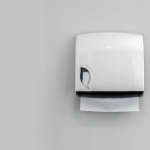5 Little Known Facts About Nutrition Response Testing You Must Know
Warning: Undefined variable $post in /home/dietofli/public_html/wp-content/plugins/code-snippets/php/snippet-ops.php(584) : eval()'d code on line 3
Warning: Attempt to read property "ID" on null in /home/dietofli/public_html/wp-content/plugins/code-snippets/php/snippet-ops.php(584) : eval()'d code on line 3
The estimated reading time is 3 minutes
Warning: Undefined variable $post in /home/dietofli/public_html/wp-content/plugins/oxygen/component-framework/components/classes/code-block.class.php(115) : eval()'d code on line 3
Warning: Attempt to read property "ID" on null in /home/dietofli/public_html/wp-content/plugins/oxygen/component-framework/components/classes/code-block.class.php(115) : eval()'d code on line 3

Are you curious about nutrition response testing? And wondering how it can benefit you? Discover 5 interesting facts about nutrition response testing now.
Have you been unwell for a long time but struggled to get any answers?
Nutrition response testing is a type of non-invasive analysis that uses your autonomic nervous system to understand the underlying causes of poor health.
What is nutrition response testing, and what does it involve? Keep reading to learn five essential NRT facts that you should know before your appointment.
-
Nutrition Response Testing Isn't a Diagnosis
The practice of medicine includes two equally important parts: diagnosis and treatment.
Nutrition response testing doesn't provide a diagnosis. You won't walk away knowing the name of the ailment or condition that's harming your health. Instead, it uses two different parts: analysis and health improvement programs.
During the analysis, providers use NRT to assess your health status. Then, they use the results to create a clinical nutrition program that addresses your health weaknesses.
-
NRT Uses the Autonomic Nervous System
The autonomic nervous system is a bodily system that regulates processes like your:
- Heart rate
- Respiratory rate
- Urination
- Sexual arousal
- Pupillary Response
It's a sympathetic system that responds to outside triggers and factors.
NRT uses the autonomic nervous system by identifying the flow of energy to different areas and organs. The practitioner does this with their hands - not with any other machines.
Their goal is to identify "active" areas, which signal dysfunction and stress that damage your health.
-
Your Health Improvement Program Targets Active Areas
Your NRT practitioner then uses the assessment results to create a Health Improvement Program.
However, the program isn't just a healthy diet. It is a nutritional formula that targets the "active" areas to strengthen them and bring them back to full health.
-
The Program Includes Lots of Supplements
The big focus of nutrition is on eating healthy (whole foods, low sugar, non-GMO, etc.). While NRT requires you to follow those rules, your NRT practitioner will provide you with supplements that specifically target the deficiencies identified during your assessment.
You can view here the supplement types used in NRT.
-
It's Possible to Use NRT to Restore Your Health
By using healthy eating and the correct nutritional supplements, it is possible to restore your health by helping your body's natural processes along.
However, it is important to remember that NRT is not a replacement for traditional medicine or a visit to your doctor. Indeed, NRT is another name for Applied Kinesiology, which was more commonly used twenty years ago.
There's no science-based evidence for the efficacy of NRT. The lack of evidence isn't a result of no one studying it. On the contrary, three studies looked for any sign that it works and found none.
If you are experiencing physical distress or illness, be sure to try NRT in conjunction with traditional medicine.
Is Nutrition Response Testing Right for You?
Nutrition response testing (NRT) looks for areas in your body where the energy is weak and uses a healthy diet and supplements to restore your health. Holistic health practices and chiropractic offices provide the service, and it's best used in conjunction with consultations from your physician. Will you try NRT? Read our Alternative Medicine archive for more details on holistic treatments.














